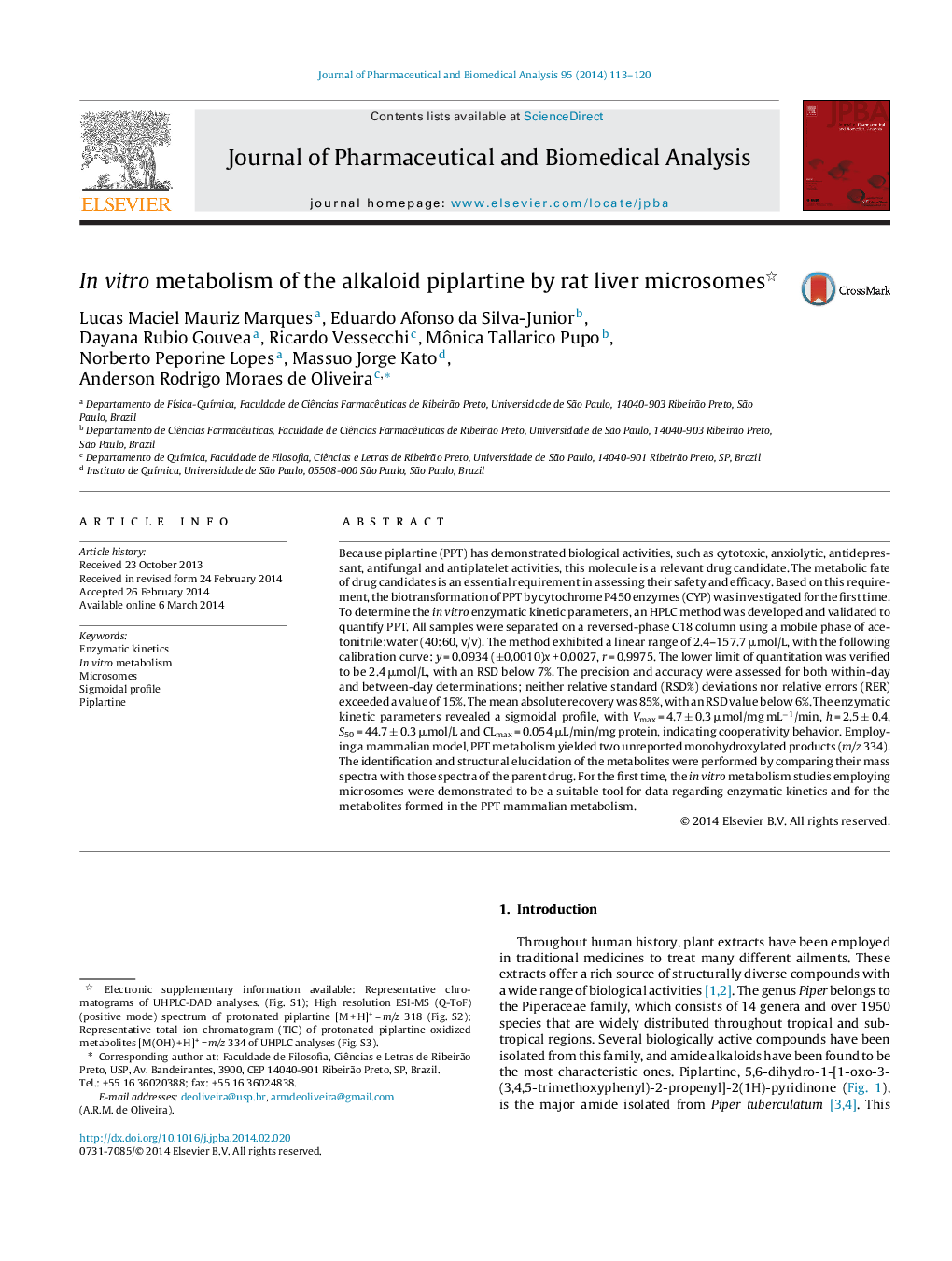| کد مقاله | کد نشریه | سال انتشار | مقاله انگلیسی | نسخه تمام متن |
|---|---|---|---|---|
| 1221369 | 1494640 | 2014 | 8 صفحه PDF | دانلود رایگان |
• Piplartine metabolism by rat liver microsomes was investigated for the first time.
• The in vitro metabolism yielded two monohydroxylated products.
• The enzymatic kinetic parameters revealed a sigmoidal profile.
• The isoenzyme responsible for the metabolism possesses at least three binding sites.
• Microsomes showed to be a useful and simple tool to in vitro metabolism studies.
Because piplartine (PPT) has demonstrated biological activities, such as cytotoxic, anxiolytic, antidepressant, antifungal and antiplatelet activities, this molecule is a relevant drug candidate. The metabolic fate of drug candidates is an essential requirement in assessing their safety and efficacy. Based on this requirement, the biotransformation of PPT by cytochrome P450 enzymes (CYP) was investigated for the first time. To determine the in vitro enzymatic kinetic parameters, an HPLC method was developed and validated to quantify PPT. All samples were separated on a reversed-phase C18 column using a mobile phase of acetonitrile:water (40:60, v/v). The method exhibited a linear range of 2.4–157.7 μmol/L, with the following calibration curve: y = 0.0934 (±0.0010)x + 0.0027, r = 0.9975. The lower limit of quantitation was verified to be 2.4 μmol/L, with an RSD below 7%. The precision and accuracy were assessed for both within-day and between-day determinations; neither relative standard (RSD%) deviations nor relative errors (RER) exceeded a value of 15%. The mean absolute recovery was 85%, with an RSD value below 6%. The enzymatic kinetic parameters revealed a sigmoidal profile, with Vmax = 4.7 ± 0.3 μmol/mg mL−1/min, h = 2.5 ± 0.4, S50 = 44.7 ± 0.3 μmol/L and CLmax = 0.054 μL/min/mg protein, indicating cooperativity behavior. Employing a mammalian model, PPT metabolism yielded two unreported monohydroxylated products (m/z 334). The identification and structural elucidation of the metabolites were performed by comparing their mass spectra with those spectra of the parent drug. For the first time, the in vitro metabolism studies employing microsomes were demonstrated to be a suitable tool for data regarding enzymatic kinetics and for the metabolites formed in the PPT mammalian metabolism.
Figure optionsDownload as PowerPoint slide
Journal: Journal of Pharmaceutical and Biomedical Analysis - Volume 95, July 2014, Pages 113–120
